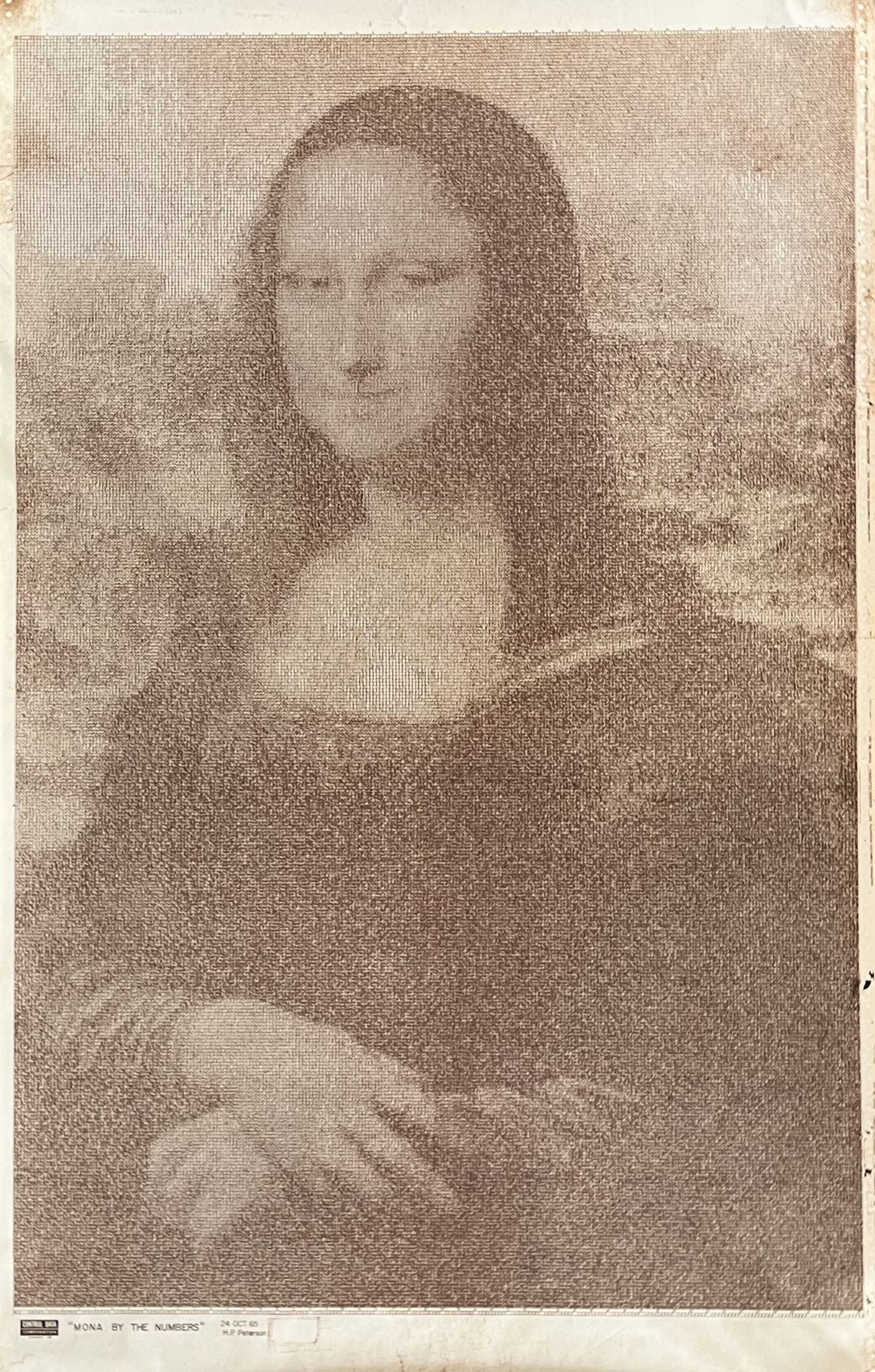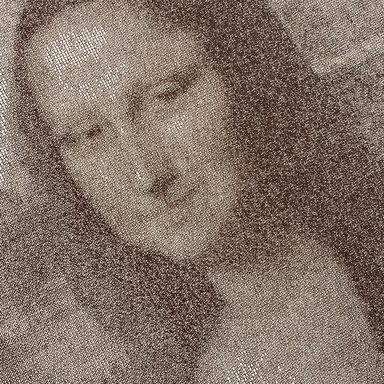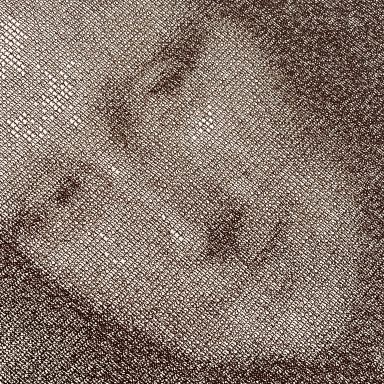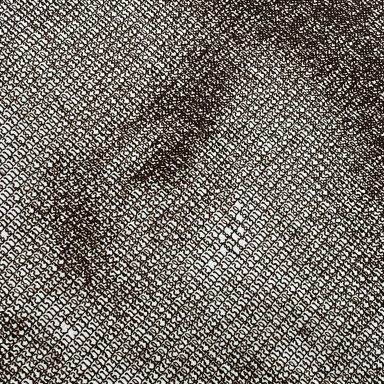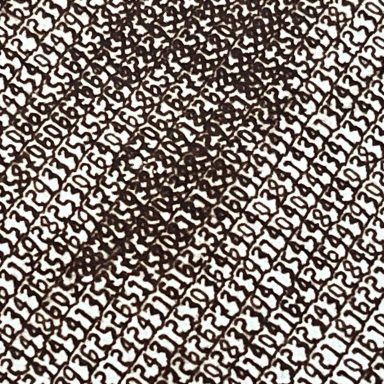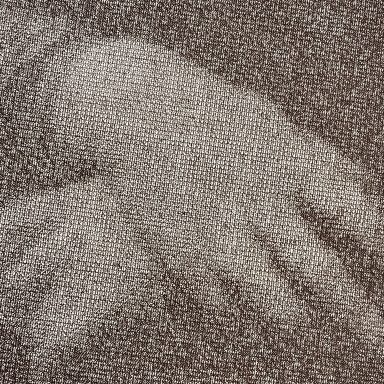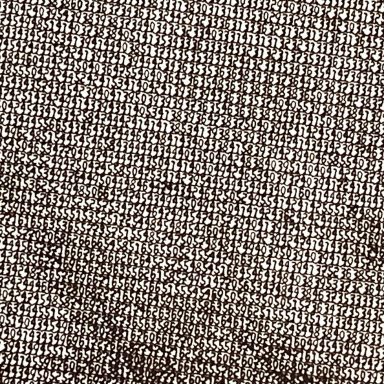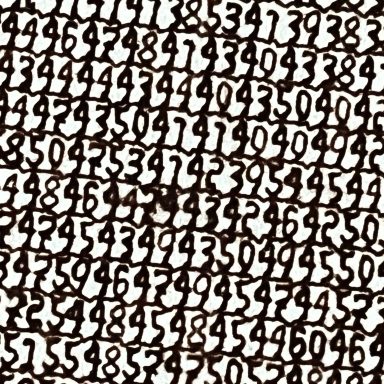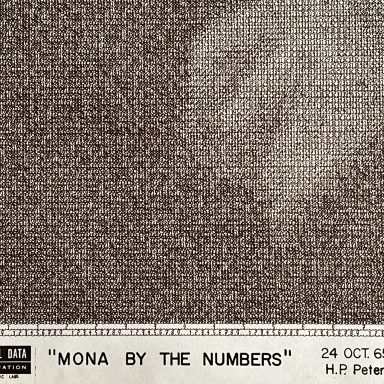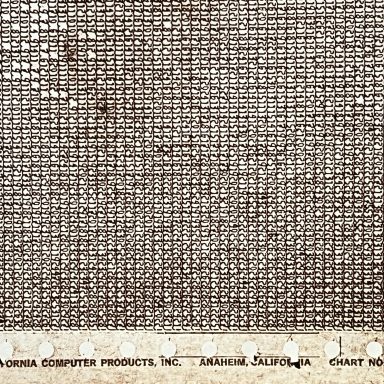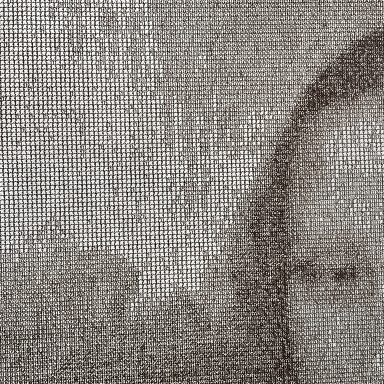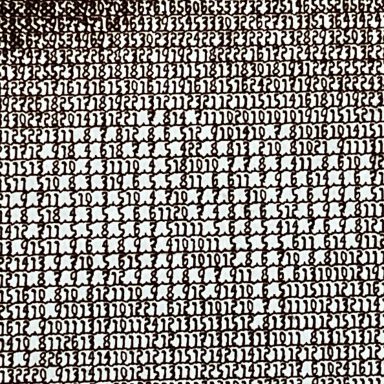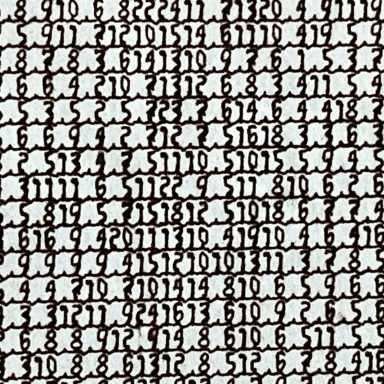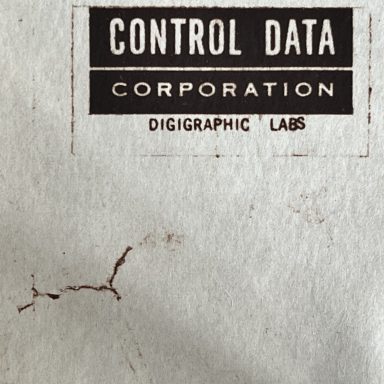Basic Information
Title: Mona by the Numbers
Artist(s):
H. Philip Peterson
Date Created: 1965
Unframed Dimensions: 50.5 x 31 in.
Medium: diazo sepia print on paper
Inventory ID: Peterson-1965-01
Description
artist’s name, title, and date printed along the bottom edge in ink
a diazo sepia print after an original computer-generated plotter drawing created at Control Data Corporation’s Digigraphics Laboratories, Burlington, MA
hardware: CDC 3200 computer
output machine: CalComp Model 564 plotter
Mona by the Numbers appeared on the cover of the December 1965 issue of Computers and Automation with a written description by H.P. Peterson on page 13.
Text quoted from page 13:
“In your “Computer as an Artist” covers of the past, analog forms seem to dominate. In an effort to counter this insidious tendency, I have sent you, for your consideration, a “pure” digital work of art (admittedly not original). It is digital in the following ways:
a) It is composed of square cells, 0.115″ on a side. It is 256 cells wide and 390 cells high. (The top and bottom two rows contain identification information.) Cells are marked off by ticks in the horizontal lines between rows.
b) Each cell contains two decimal digits. The magnitude of these numbers is proportional to the density at points on a color projection slide (.9″ by 1.35J’1) as measured by a CDC 160 computer driving a special high-resolution
“jumping spot” scanner. (Actually, 9 bits of density are measured at each point.) There are about 100,000 cells in this picture. My research scanner, however, is capable of examining 64 x 106 points inside a 2″ x 2″ target area, extracting 9 bits from each, but this much detail would require 12,000 hours to plot using this technique.
c) The number in each cell is the result of scanning 8 points in each tiny area and averaging their densities. About 106 points were examined which took the CDC 160 about four minutes.
d) The digits are plotted by an incremental plotter driven on-line by a CDC 3200 computer. I designed the font in such a way that the larger the pair of digits are, the darker they appear to the human eye at that cell. Up close to the picture, you see what the computer “sees” – namely, a number field; at about 30 feet away, you see the picture shaded as well as a news- paper photograph. (Perhaps a little better, since there are 100 gray levels.)
e) It takes about 64 plotter steps to make each digit. The whole picture took about 16 hours to plot and consists of about 16,000,000 plotter steps (300 per second). It was done on a weekend in ope continuous computer run.
How digital can one get? (However, much to my chagrin, the reproduction process is analog – a sepia copy from a diazo machine.) In any case, I hope you enjoy this version of Mona Lisa. A close-up of her enigmatic smile would prob- ably be the most interesting way of demonstrating the tech- nique used.”

